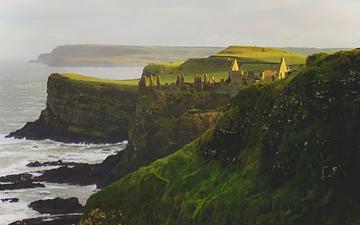Orange Men's Day
Категория: Новости
Относится к городам:
- Краснознаменск
.jpg)
Protestant Irish march with drums and pipes to commemorate the Battle of Boyne, which occurred on Ireland’s east coast in 1690. In Northern Ireland, it is a bank holiday. Schools and many businesses and organizations are closed. Some sops may be closed. Public transport services may run on their regular or special holiday timetables
In 1690, William III of England defeated the exiled Catholic king James II at the Battle of the Boyne. James, who had been in France, had invaded Ireland with French troops.
Men wear orange sashes and black suits and bowler hats. Orange Day marches also take place in Birmingham and Liverpool, and in some parts of Canada, for example."
This day is known as "Orangemen's Day", "Orange Day", "the Glorious Twelfth" or just "the Twelfth". The day falls on July 12. However, if July 12 is a Saturday or Sunday, the bank holiday falls on Monday, July 13 or 14.
People in Northern Ireland annually celebrate Orangemen's Day to commemorate the Battle of Boyne, which occurred on Ireland’s east coast in 1690. It is a bank holiday on or after July 12 and often features marches. This day is known as "Orangemen's Day", "Orange Day", "the Glorious Twelfth" or just "the Twelfth".

Geared up in a black suit and bowler hat for an Orangemen's Day march.
What do people do?
In many towns in Northern Ireland, marches or walks are held by organizations with a Protestant orientation. The marching season lasts from April until August but the Glorious Twelfth (of July), or Orangemen's Day, is particularly important. Many marches are organized by Lodges of the Orange Order and are accompanied by a marching band.
Participants in the walks, or marches, often wear dark suits, although they may remove their jackets if it is hot. Traditionally, they also wore black bowler hats and white gloves, although these are not as common now. The participants also wear collarettes. This type of collarette is made from a long thin piece of cloth, which is draped around the neck of the wearer and joined to form a “V” shape at the front. Many collarettes are made from orange cloth, although there may be other colors. The collarettes bear the number of the lodge that the wearer belongs to and a range of badges showing the person’s positions in or degrees from the lodge.
Many lodges carry at least one flag during the marches. This is normally the Union Flag, sometimes known as the Union Jack, although some carry Scottish, Ulster or Orange Order flags. Many lodges also carry one or more banners. These display the name and number of the lodge on one side. The other side often displays images of William of Orange, deceased lodge members, local landmarks or the bible with a crown.
Public life
Orangemen's Day, or the Glorious Twelfth, is a bank holiday in Northern Ireland. It normally falls on July 12 but if that date is on a Saturday or Sunday, the bank holiday falls on Monday, July 13 or 14. Schools, public offices, many businesses and organizations, and some stores are closed. Public transport services may run on their regular or special holiday timetables.
In some towns and cities there may be local disruption to traffic on Orangemen’s Day as local lodges hold marches, or walks, through certain districts. Orangemen’s Day may be observed and celebrated in other parts of the United Kingdom (Scotland, England and Wales) where it is not a bank holiday.
Background
The Battle of the Boyne was held on July 1, 1690 on the banks of the Boyne River near the town of Dorgheda on the East coast of Ireland. It was a battle between King James VII of Scotland and James II of England and Ireland and his supporters on one side and Prince William of Orange and his followers on the other side. Prince William of Orange won the battle and became King William III.
The Battle of the Boyne has been seen as symbolic of the sectarian struggles between Catholics and Protestants in Ireland. King James was seen as representing the Catholics and Prince William was seen to represent the Protestants. This gave the Battle of the Boyne an important symbolic role in Irish politics and life. However, modern analysis of documents from the time suggests that Catholics and Protestants fought on both sides.
Although the Battle of the Boyne is now commemorated on July 12, it was held on July 1, 1690. The shift in the date is due to the changeover from the Julian calendar to the Gregorian calendar. In Ireland, the Gregorian calendar was adopted in 1752 and September 14 followed September 2. Many dates in the calendar were mapped into the new calendar without a correction. However, the Orange orders were suspicious of the Gregorian calendar and its papist connections and continued to march on the corrected date of July 12.
Orangemen’s Day is also celebrated in some areas of the USA and Canada. In the Canadian provinces of Newfoundland and Labrador, Orangemen's Day is usually celebrated on the Monday closest to July 12. In some fishing communities the celebrations are held in the winter so fishermen do not lose valuable days at sea during the cod fishing season.
The Orangemen's Day bank holiday in Northern Ireland is proclaimed by the Secretary of State for Northern Ireland. The bank holiday falls on July 12. If July 12 falls on a Saturday or Sunday, the holiday moves to Monday July 13 or 14.